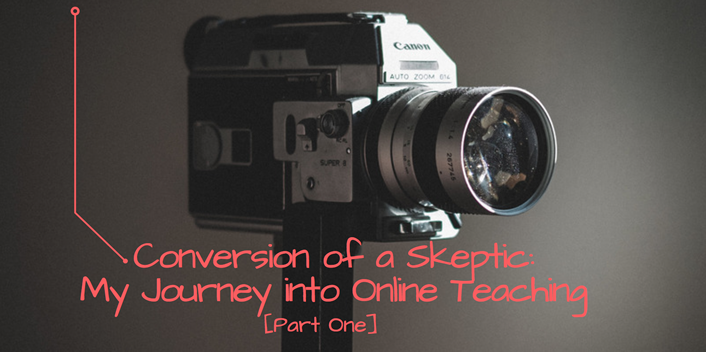
Some people are simply born to teach. This at least is how I have always felt about myself, as far back as I can recall. I was never particularly interested in professional accolade — only the deep appreciation, coupled with the warm smiles, of my cadre of devoted students, whom I taught year after year, without the slightest regret that I might have chosen a more lucrative profession.
My only goal was to create a pedagogical environment capable of cementing serious knowledge, coupled with analytical skills, in the minds of my young charges. Whatever transpired in the classroom was under my creative control; I could not, however, control the transformative changes taking place in the educational system as a whole, which were destined to upend pedagogy itself.
Plummeting Enrollments and Online Demand
The changes began to express themselves a number of years ago in the simple reality of plummeting enrollments in each of my courses, sufficient enough to place them in danger of cancellation. My academic specialty and the program in which I teach — Judaic studies — is by nature a "niche" field, perennially challenged by modest enrollment. More recently, however, some other dynamic was clearly at work. The problem was easily enough diagnosed as having to do with an increased student demand for online learning; my program had never offered courses in this format, and I had personally determined never to entertain the idea, even as a remote option.
The reason was simple enough: I have always wanted to be able to look my students in the eye and know that at least some of them are looking back. I wanted to create genuine academic experiences for my students, the kind that touched and motivated me during my own years in college, and which found a place among my most cherished memories. How could I forget my American history professor, who regularly stood before a packed lecture hall, making his most profound points and announcing with impassioned tones, "How extraordinary!"
I shuddered to think that such moments would disappear in an online environment, replaced by typing assorted responses on discussion boards and otherwise performing what amounted to ‘clerical work’ in lieu of actual engagement. However, I also recognized that resistance to change and adaptation will inexorably doom reluctant professors and their programs to the fate of dodo birds and dinosaurs. I therefore reluctantly trudged into the world of online teaching, earning my certification while lamenting reality with my fellow professorial colleagues. It was in the midst of teaching my first fully online course that I found my way to the instructional designer assigned to me, if for no other reason than to vent cathartically my tearful exasperation.
The Video Option
Having expressed my deepest fear — that the online platform amounted in my case to nothing less than a ‘career killer’ — I was presented with a surprising option. Had I considered the possibility of recording on video the lectures that have always been the heart of my classroom experience? My response, born of frustration, was entirely negative. It would hardly be feasible for the university videographers to set up their equipment in my classrooms and record semester after semester of live lectures prior to offering the same courses online, with embedded video for student viewing. This, however, was not what my instructional designer was suggesting. Rather, I should consider scripting short video lessons and recording them in the university television facility. Again, I raised objections. How could I possibly reduce three hours of class time per week to short video segments and still convey the essence of what I want to teach? I will have compromised my professorial integrity and sacrificed quality instruction on the altar of brevity.
Not wishing to appear obstinate, I nonetheless agreed at least to consider the proposal. After all, I had in fact earned a master’s degree in communication and television prior to entering the world of teaching, and the brief tour of the television studio I received during my online training had awakened in me a certain interest in fusing professional video production with effective pedagogy. That nascent spark intensified after a preliminary consultation with one of the videographers in charge of television production for the university.
The idea was straightforward enough. Why not take the essence of each of my weekly lectures and re-edit it into a 20- to 25-minute video ‘featurette,’ so as to create an episodic series containing a semester's worth of the points and insights I would otherwise convey in a live class? That would of course involve writing a minimum of 14 to 15 scripts, then physically coming to the studio on a weekly basis in order to record them. Would the fruits of my labor be worth the time and effort, I wondered? Could a series like this make a positive impact on my students’ learning experience?
…be on the lookout for the next installment in this series to learn more!
Kenneth L. Hanson serves as Director of the University of Central Florida’s Interdisciplinary Program in Judaic Studies.
